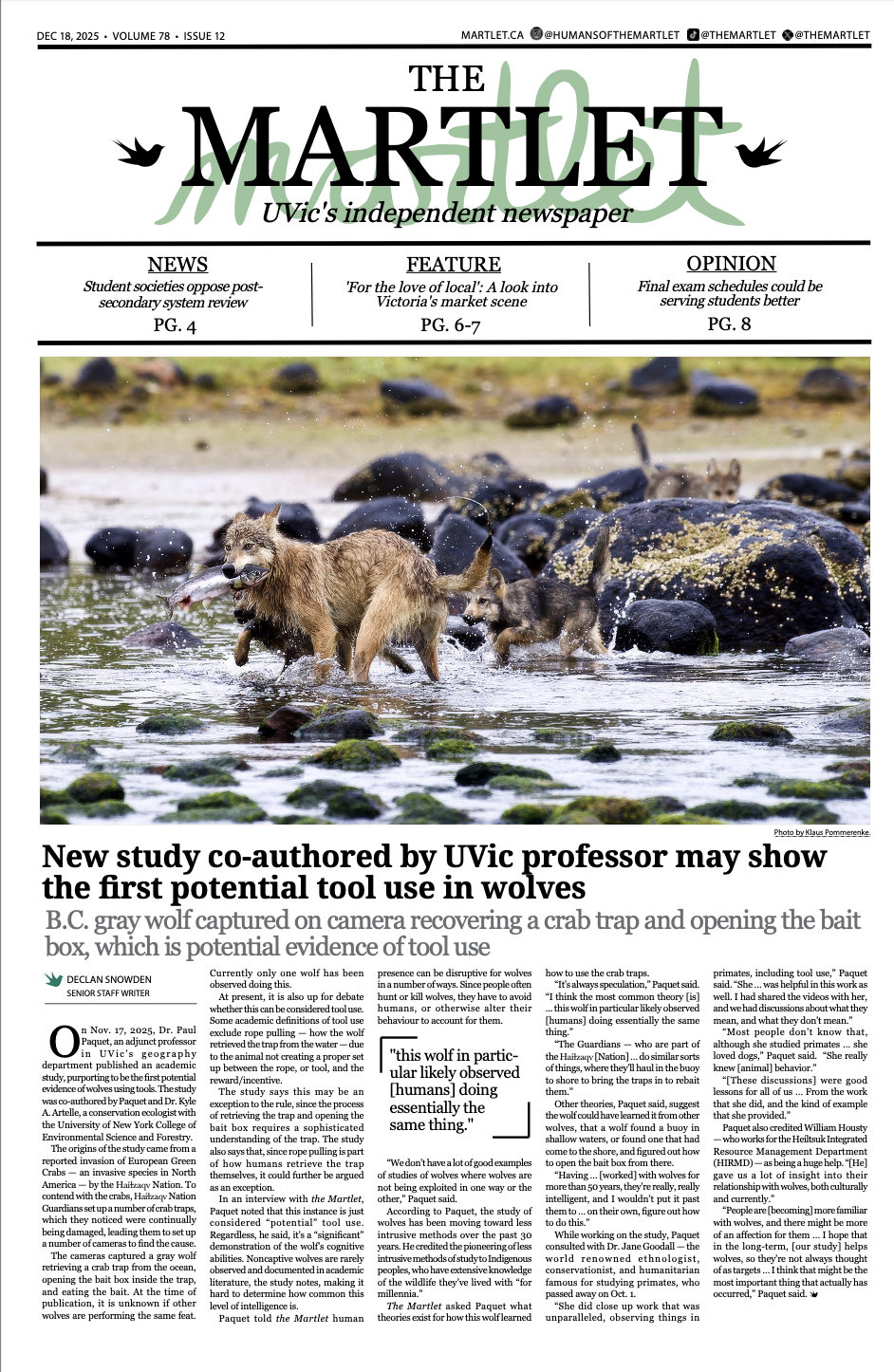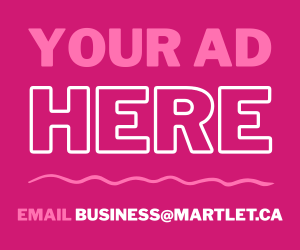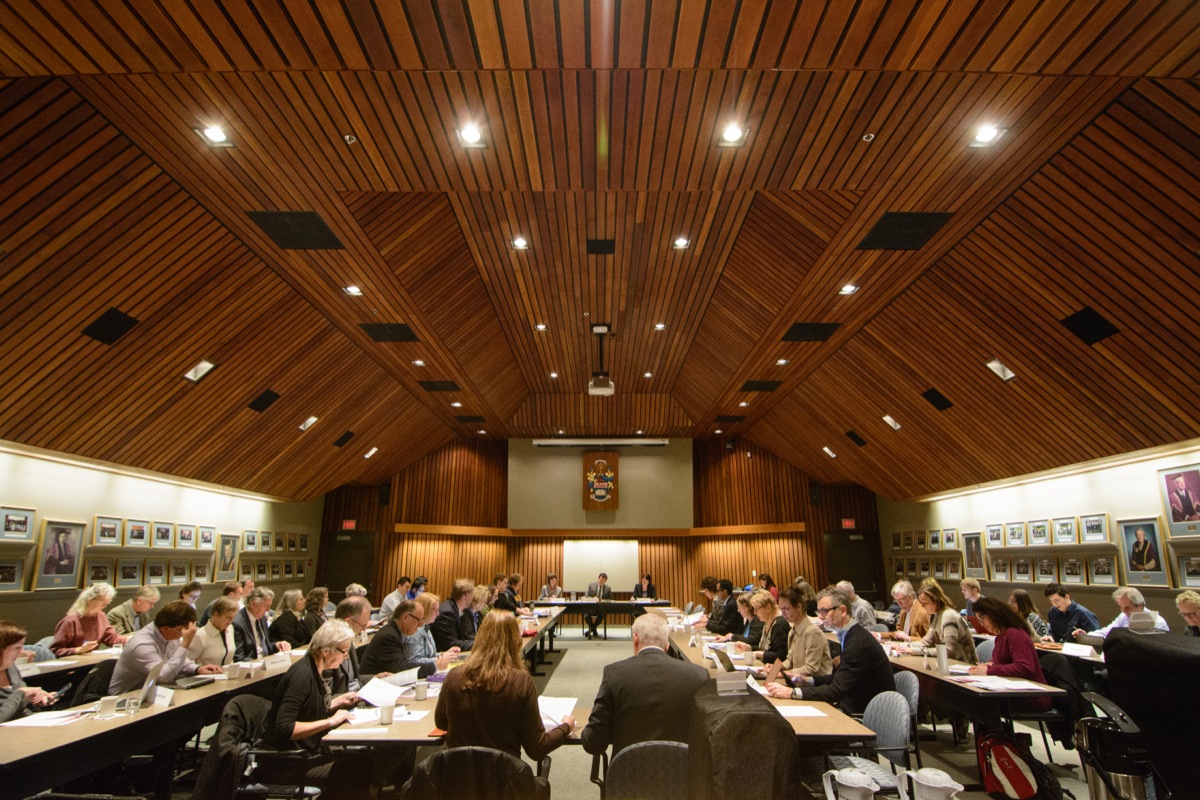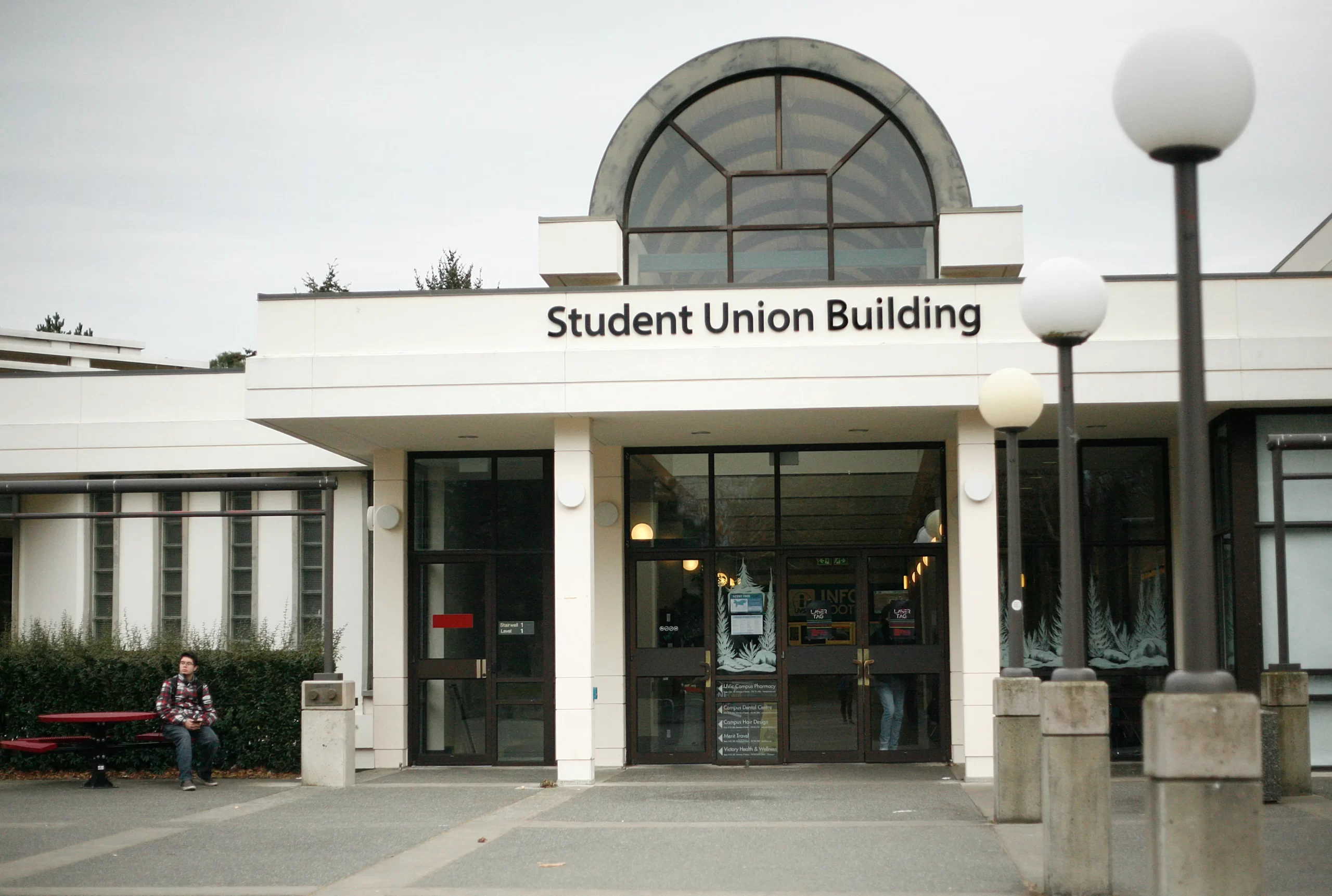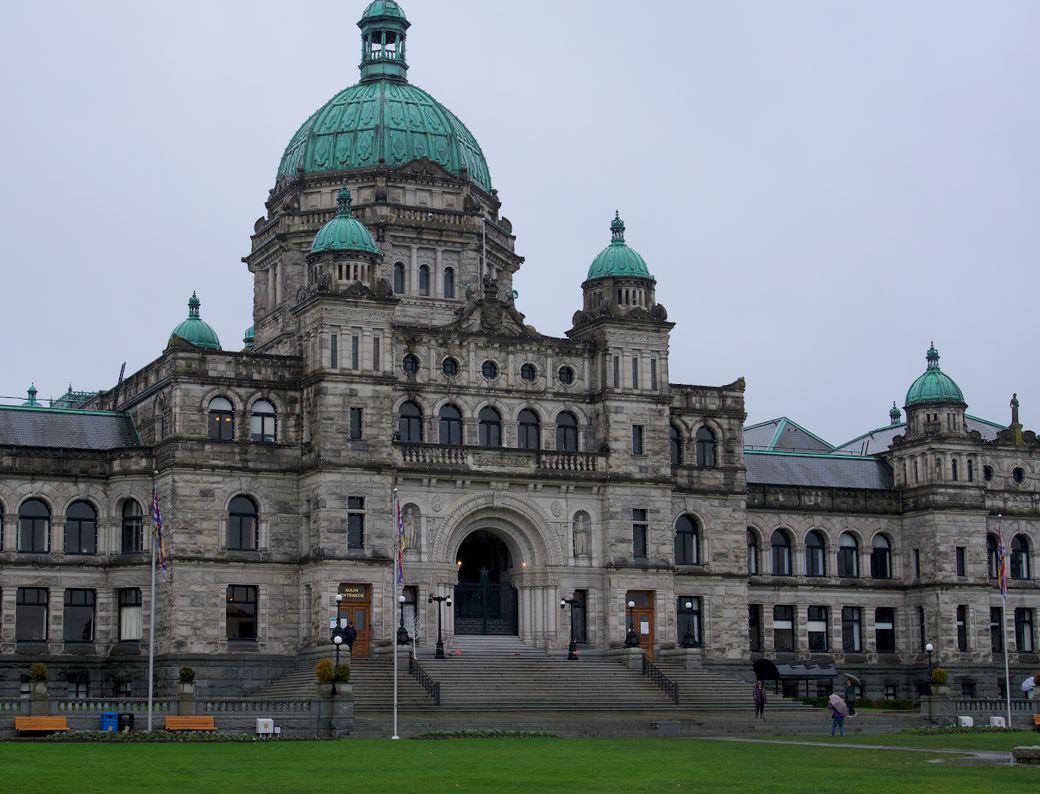‘We’re all one people in my mind’
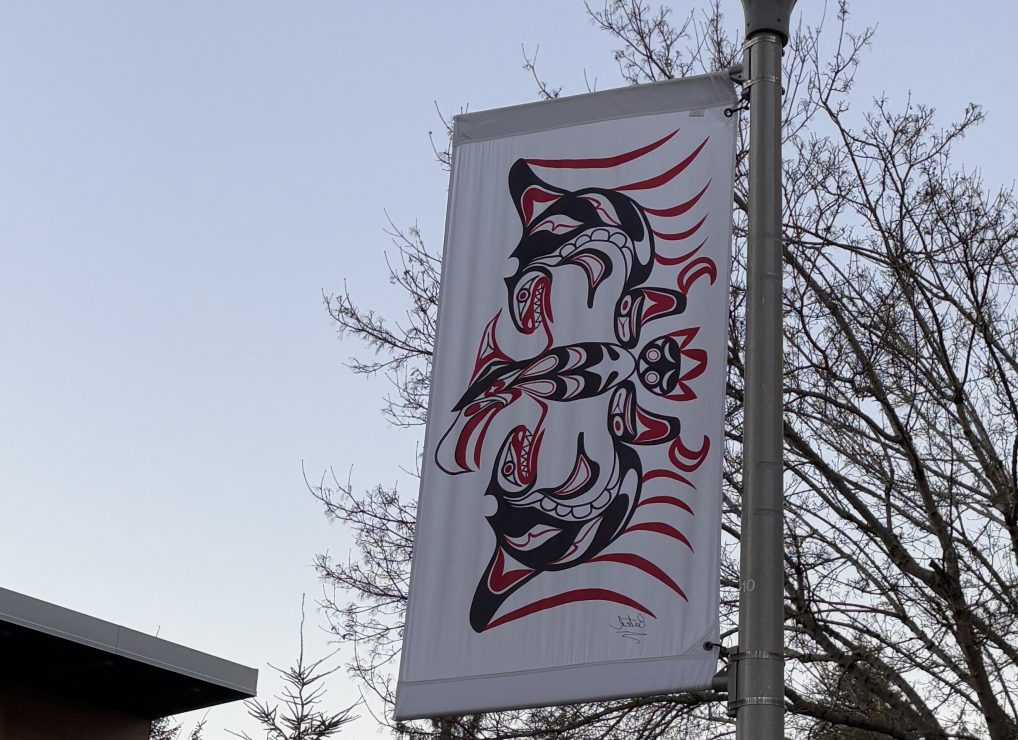
Photo by Hannah Link.
Dr. Butch Dick is a renowned Lək̓ʷəŋən artist and the designer of UVic’s new banners, which are featured on 48 light poles throughout campus.
We had the chance to sit down with him to learn about the designs, his process for creating art, and his experience as a beloved teacher.
This interview has been edited for clarity and concision.
Tell me a bit about yourself as an artist.
“I’ve had quite a bit of training, but not in the realm of First Nations art. I went to the Vancouver School of Art on a scholarship, and I studied graphic design at Camosun College, but it didn’t really lead me to the path that I wanted to follow, which was First Nations art. When I went to Camosun, the late Chief Tony Hunt from the Kwakwaka’wakw Nation was the instructor, and he taught me all the basics of designing. From there I just never stopped.”
What was your artistic process like for this piece?
“It wasn’t such a challenge when I first designed it, because these ideas just come. The idea of symmetry is kind of difficult, because I’m not a computer person. I can’t duplicate things exactly the same way, as they do nowadays, so I’m still a pencil and Sharpie artist.”
What does the design on the banners represent?
“That design — it symbolizes a lot of things in my mind, because it’s a combination of the eagle and the killer whale. Each happens in one part of the environment; one is sky, and one is water. Really, it symbolizes Earth, if this had to do with people. We’re all one people in my mind … and we’re all on this big sacred circle and there’s no way we can change that.”
What do you hope that students feel when they walk around campus and see your art?
“My artwork, a lot of the time, has to do with the environment, or the ecosystem. At the time of reconciliation, I would hope that it creates understanding. It would prompt people to ask questions about First Nations people, and find out a little bit more, in particular, about where the university stands.”
What made you want to go to art school?
“I think I always wanted to go to art school, but I didn’t have a destination as far as art was concerned. I’ve always liked to draw. I’ve always sketched, when I probably should have been doing math, or English, or science. Most of my tablets in those days were lots of scribbles.”
How long does your process take?
“There’s a design I started this morning and I was finished in half an hour. That’s pretty well normal. Sometimes I do up to three or four designs or pictures a day.”
What was your experience like working in First Nations art education?
“Many years ago, I had a call from the coordinator of First Nations education … and she said that a teacher had left the position, and there was a job open in the Greater Victoria School District. She asked me if I was interested, and I went down to the office and she told me about the job. I said I’d like to try it, although I never had any teaching experience whatsoever.”
“I didn’t have any idea of what that was going to look like. I knew that it was going to be challenging because it was middle school, and behaviour is usually a big deal in middle school … I began to design lesson plans that would help students learn about First Nations art, and also appreciate First Nations art and people. The undertones of that was that they respect who they are, their classmates, and me as an instructor. I got a great big [piece of] chalk and I wrote ‘respect’ on the wall, and said, ‘That’s all I ask for.’ And it worked, thank goodness.”
How long did you work in the classroom?
“[For] 27 years. When I first started, they said: ‘We’ll hire you until we find somebody better.’ I taught all of the grade levels, from kindergarten and elementary to middle school and high school. Just about every school in Victoria was where I taught.”
That’s amazing — I’m sure there are thousands of people now who know exactly who you are.
“Actually, that’s a constant. We go out quite a bit, and even to garage sales in the summertime. I meet students there and they introduce me to their children. In malls, and even in Vancouver at Science World. . . Even just last week, the lady working the counter asked me what my name was and said ‘I was your student at Macaulay Elementary.’ To be remembered like that, it’s a neat thing to happen. Like a teacher’s reward.”




